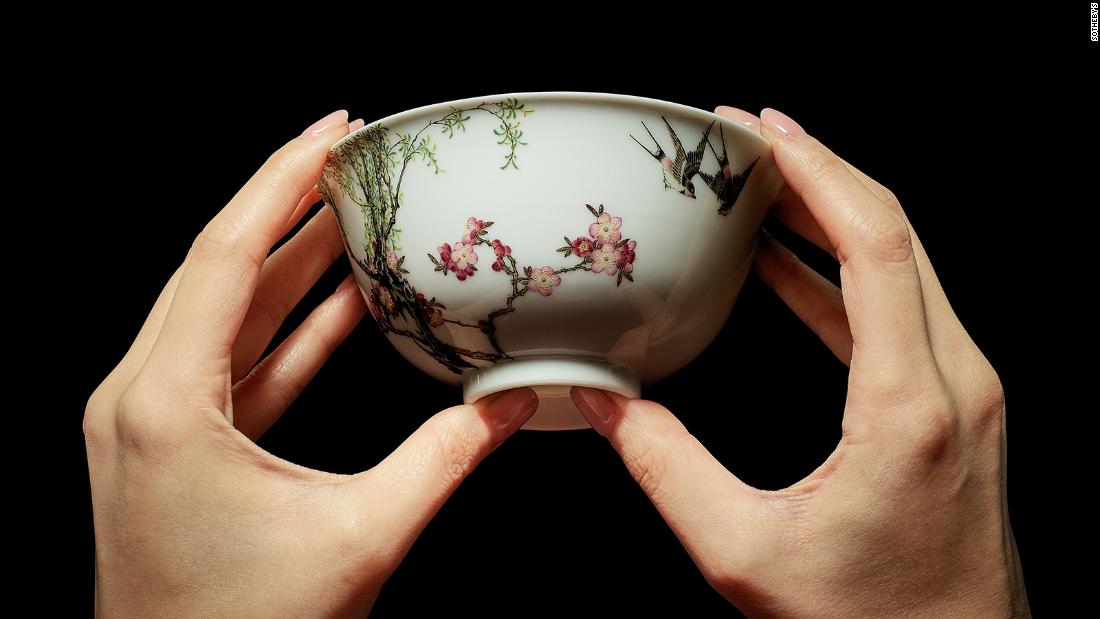A delicate porcelain bowl, measuring under 4.5 inches in diameter, sold for more than $25 million during a bumper week of Chinese art sales in Hong Kong.
Described by auction house Sotheby’s as “highly important,” the antique hails from a rare group of ceramics decorated at Beijing’s imperial workshops in the 18th century.
Fetching 198.2 million Hong Kong dollars ($25.3 million) on Saturday, the bowl depicts two swallows, a blooming apricot tree and a willow. The design also features an excerpt from a poem thought to have been commissioned by Yongzheng’s Ming dynasty predecessor, the Wanli Emperor.
The bowl is 4.5 inches in diameter. Credit: Sotheby’s
In the auction catalog, ceramics expert Regina Krahl said that motifs featuring birds and flowers were popular in the Yongzheng period. She also described the bowl as among a small group of items representing “the peak of painting on porcelain, an artistry that was never surpassed.”
Once part of a pair, the item was first recorded in a collection assembled by Shanghai-based shipping merchant Captain Charles Oswald Liddell in the late 19th century. The two bowls were split up in 1929, when they were each sold for £150 (amounting to just over £7,600, or $9,400, in today’s money). The bowl’s “twin” is held now at the British Museum in London, Sotheby’s said.
The one sold on Saturday meanwhile passed hands several times over the decades, with previous owners including the American socialite Barbara Hutton. It was most recently acquired by businesswoman and collector Alice Cheng, who purchased it for a then-record 151.32 million Hong Kong dollars (19.3 million) in 2006.

An imperial blue and white “Dragon” ewer, dating to the Ming Dynasty, sold for $13.7 million. Credit: Sotheby’s
The piece was among the standout lots in Sotheby’s Hong Kong spring series, a succession of high-profile sales marking 50 years since the auction house began operating in Asia. Other auctions spanned watches, handbags and vintage wines, while the various Chinese art sales fetched a combined 1.64 billion Hong Kong dollars ($208.5 million).
Historical items on sale included vases, statues and imperial treasures ranging from a jade seal to a set of archers’ rings.
Among the biggest sellers was a blue and white vessel known as a ewer, which sold for 107.5 million Hong Kong dollars ($13.7 million). Dating back to the Ming Dynasty, the porcelain antique was produced for the Yongle Emperor’s personal use.

“Pink Lotuses on Gold Screen,” a 1973 painting by Zhang Daqian, sold for $32 million. Credit: Sotheby’s
In a statement, Sotheby’s Asia chair Nicolas Chow described the week’s results as “exceptional,” adding that Chinese art remains “at the forefront of our business.”
Sumber: www.cnn.com






